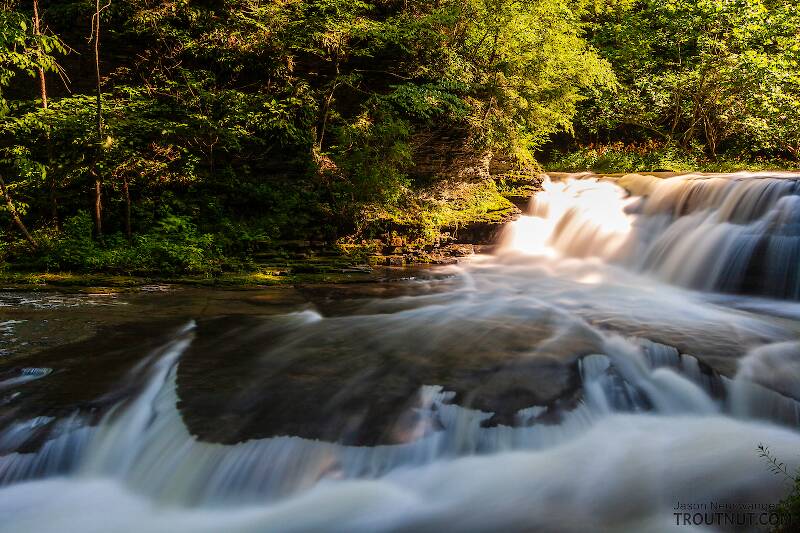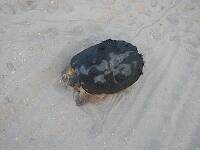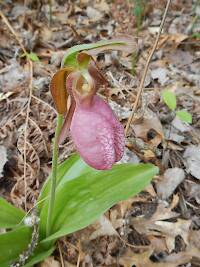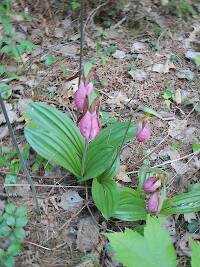
Salmonflies
Pteronarcys californica
The giant Salmonflies of the Western mountains are legendary for their proclivity to elicit consistent dry-fly action and ferocious strikes.
Featured on the forum

Troutnut is a project started in 2003 by salmonid ecologist Jason "Troutnut" Neuswanger to help anglers and
fly tyers unabashedly embrace the entomological side of the sport. Learn more about Troutnut or
support the project for an enhanced experience here.
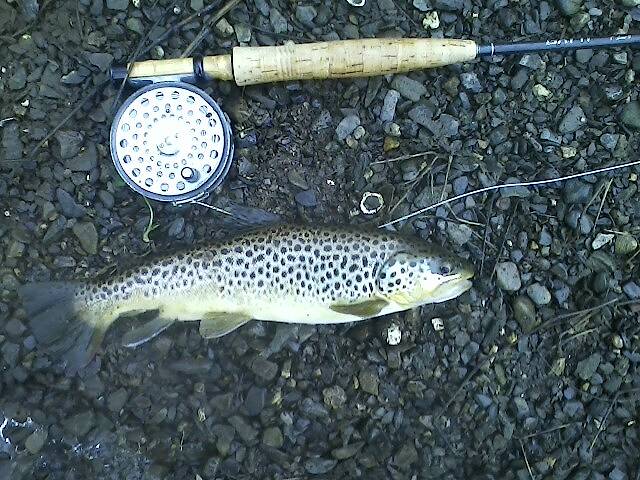
Report at a Glance
| General Region | Berks County |
| Specific Location | Rebers Bridge |
| Dates Fished | January 09 |
| Time of Day | 11:00 - 2:30 |
| Fish Caught | Two rainbows, one brown |
| Conditions & Hatches | Nice flow, water absolutely fridgid. Even with insulated socks my feet were numb within half an hour. Weather okay upon arrival but quickly went down hill. Air about 40 degrees, showers for about an hour. Saw two midges all day. No rising fish. |
Details and Discussion
Wbranch on Jan 9, 2013January 9th, 2013, 6:30 pm EST
Fish didn't really "strike" - dead drifting two Estaz egg patterns - line would just stop and when I lifted to see if I was snagged a fish would be on. I guess since the water was so cold that if the fly drifted in front of them they just opened their mouth, inhaled the fly, and just stayed where they were.
One time I did think I was snagged as the line just wouldn't budge and I pulled up on the rod sharply and what appeared to be a 16" - 17" brown bolted away and turned on it's side and the hook pulled out. Digital camera wouldn't work as cold sucked the life out of the battery. Then remembered I had the cell phone and I got a picture of a brown that appears to be a holdover or stream bread as it had no clipped fins.
One time I did think I was snagged as the line just wouldn't budge and I pulled up on the rod sharply and what appeared to be a 16" - 17" brown bolted away and turned on it's side and the hook pulled out. Digital camera wouldn't work as cold sucked the life out of the battery. Then remembered I had the cell phone and I got a picture of a brown that appears to be a holdover or stream bread as it had no clipped fins.
Catskill fly fisher for fifty-five years.
Martinlf on Jan 10, 2013January 10th, 2013, 2:54 am EST
Nice looking fish; I'm glad some of the bigger fish made it through the summer. There had been reports of them struggling once the water got low and the weather hot.
"He spread them a yard and a half. 'And every one that got away is this big.'"
--Fred Chappell
--Fred Chappell
Wbranch on Jan 10, 2013January 10th, 2013, 4:00 am EST
Louis,
"There had been reports of them struggling once the water got low and the weather hot."
I initiated a post at PAflyfishing about the struggling and dying trout, particularly browns, that I was in distress in the Rebers Bridge stretch in late July 2012. I remember seeing really large browns, 16" - 18", drifting downstream and suspended high in the water column. One was coming down right in front of me and I went out and picked it up and brought it into the shallows and tried to revive it but in a few minutes it expired. Then when leaving I was right down near the bridge and a brown of 18" was floating be dead.
"There had been reports of them struggling once the water got low and the weather hot."
I initiated a post at PAflyfishing about the struggling and dying trout, particularly browns, that I was in distress in the Rebers Bridge stretch in late July 2012. I remember seeing really large browns, 16" - 18", drifting downstream and suspended high in the water column. One was coming down right in front of me and I went out and picked it up and brought it into the shallows and tried to revive it but in a few minutes it expired. Then when leaving I was right down near the bridge and a brown of 18" was floating be dead.
Catskill fly fisher for fifty-five years.
Strmanglr on Jan 10, 2013January 10th, 2013, 7:56 am EST
That's a nice outing.
Went out Monday and had my thick socks on and had cold feet instantly. Went out Tuesday same socks(clean) with sock liners I got at Cabelas, toasty all day. Air was a little cooler on Monday and perhaps a slightly colder stream this time of year.
Went out Monday and had my thick socks on and had cold feet instantly. Went out Tuesday same socks(clean) with sock liners I got at Cabelas, toasty all day. Air was a little cooler on Monday and perhaps a slightly colder stream this time of year.
Wbranch on Jan 10, 2013January 10th, 2013, 10:22 am EST
Strmanglr,
"with sock liners I got at Cabelas"
Do you mean those thin wite polyprolene socks or something else? I had a pair but didn't put them on. Where did you fish Mon & Tue?
"with sock liners I got at Cabelas"
Do you mean those thin wite polyprolene socks or something else? I had a pair but didn't put them on. Where did you fish Mon & Tue?
Catskill fly fisher for fifty-five years.
Martinlf on Jan 10, 2013January 10th, 2013, 2:09 pm EST
Yes, that was probably your report on PA Angler that I'd seen.
"He spread them a yard and a half. 'And every one that got away is this big.'"
--Fred Chappell
--Fred Chappell
PaulRoberts on Jan 12, 2013January 12th, 2013, 2:40 am EST
The fish in the image looks like it could be a possible stocky. There is a warp in the leading edge of the dorsal, and possibly the pectoral too -the two fins that show it most.
The split anal fin is interesting. Mink? Larger trout? Could have been an aggressive brown during the spawn, but it looks well healed and the fish doesn't appear to be that old.
There's wear on the lower caudal fin which could be from wear on the bottom at a holding site. Or it could be from redd digging. Fully mature fish get rounded fins. Younger ones have sharp edged, and somewhat pointed, fins. This one looks like it could go either way, despite its small size. The tail looks mature, although that could be due to healed wear at the rear margin -common in hatchery fish.
The large spotting is very cool, looking like a Seeforelle. Probably not, although I wonder if that hatchery had ever handled them. NY stocked some in Lake O at one point a while back.
It's fun looking at fish and trying to glean info about who they are and where they've been.
The split anal fin is interesting. Mink? Larger trout? Could have been an aggressive brown during the spawn, but it looks well healed and the fish doesn't appear to be that old.
There's wear on the lower caudal fin which could be from wear on the bottom at a holding site. Or it could be from redd digging. Fully mature fish get rounded fins. Younger ones have sharp edged, and somewhat pointed, fins. This one looks like it could go either way, despite its small size. The tail looks mature, although that could be due to healed wear at the rear margin -common in hatchery fish.
The large spotting is very cool, looking like a Seeforelle. Probably not, although I wonder if that hatchery had ever handled them. NY stocked some in Lake O at one point a while back.
It's fun looking at fish and trying to glean info about who they are and where they've been.
Wbranch on Jan 12, 2013January 12th, 2013, 6:34 am EST
I've fished the Tully for at least fifteen years and have neer caught a brown there that looked like this.
Catskill fly fisher for fifty-five years.
Martinlf on Jan 12, 2013January 12th, 2013, 7:07 am EST
I've seen a few of these stocked in PA. Caught one on the Little Lehigh a few years back. But there aren't many of them. Its spotting pattern looks somewhat like those wild Main Stem Delaware browns, though I don't think there is much, if any, reproduction in the Tully below the dam. Above the dam, is another story, but I believe the wild fish there are mostly, if not all, Von Behrs. Long story short, I believe this is a stocked fish. But if not, it wouldn't be the first time I was wrong.
"He spread them a yard and a half. 'And every one that got away is this big.'"
--Fred Chappell
--Fred Chappell
Strmanglr on Jan 13, 2013January 13th, 2013, 6:03 am EST
Yes, thin sock liners, grey in color.
Monday I fished a creek that can freeze in extremely cold winters, Tuesday a creek that never freezes.
Monday I fished a creek that can freeze in extremely cold winters, Tuesday a creek that never freezes.
Oldredbarn on Jan 18, 2013January 18th, 2013, 5:25 pm EST
I initiated a post at PAflyfishing about the struggling and dying trout, particularly browns, that I was in distress in the Rebers Bridge stretch in late July 2012. I remember seeing really large browns, 16" - 18", drifting downstream and suspended high in the water column. One was coming down right in front of me and I went out and picked it up and brought it into the shallows and tried to revive it but in a few minutes it expired. Then when leaving I was right down near the bridge and a brown of 18" was floating be dead.
Matt,
What was this about? I was reading this thread and saw this and everyone seemed to blow by it...Did you get to the bottom of it?
There is a section of the Au Sable below the Mio dam that they call the Big Water. Below the dam it can warm up in the summer months. The stock the fish here...They have created a patch and a pledge called the 70 Degree Pledge and guys pledge not to fish when the water temps get around 70 degrees...I have heard that last summer they had a fish die-off down there...
The last few Mays up north have been down right balmy...I can remember fishing my week and it snowing on me.
Up where I fish, above the dam, the spring fed water is usually cooler, but has been warming up to dangerous levels at times.
Spence
"Even when my best efforts fail it's a satisfying challenge, and that, after all, is the essence of fly fishing." -Chauncy Lively
"Envy not the man who lives beside the river, but the man the river flows through." Joseph T Heywood
"Envy not the man who lives beside the river, but the man the river flows through." Joseph T Heywood
Wbranch on Jan 19, 2013January 19th, 2013, 2:10 am EST
Spence,
"What was this about? I was reading this thread and saw this and everyone seemed to blow by it...Did you get to the bottom of it?
Well it was a result of a prolonged warm/hot air temperature condition and a shallow reservoir combined with a shallow river with few cold water spring refuges. I had not fished there for a few weeks and did not have my thermometer with me. I was seeing plenty of rising trout and catching healthy, and feisty, rainbows on Tricos and midge patterns on 7X fluocarbon.
But after about an hour I started to see really large brown trout, much larger than I ever thought were in the stream, coming in towards the shallow water near shore and I could see they were breathing with much labor. Their gill plates were opening and closing rapidly. Their mouths pretty much were staying open. This stream has nice browns and rainbows in the 9" - 12" range with an occassional 14" fish. But the browns that were labored were from 16" - 19" and there was at least five within my range of vision.
One came up near the surface and I went out and picked it up out of the water and brought it to shore and tried to revive it by forcing more water to enter it's mouth and exit over the gill rakers. It was on it's last breaths and it died shortly after I brought it to shore. Later I saw an 18" brown tumbling down through some swift water and when I was leaving a fellow told me he saw trout in distress and saw one about 18" die and float by him.
When I raised this incident on another Forum most of the posters were pretty much blowing me off and kind of accusing me of crying wolf. It was quite annoying and finally I just got sick of all the people who said there was no thermal issue and so I posted that I guess I hadn't really seen it and made it all up.
It pretty much boiled down to most of the readers didn't believe me or didn't want to admit their was a problem. It is a Delayed Harvest approved trout water so maybe next summer when I fish there I will harvest every trout that I catch and have weekly fish fries at my house.
"What was this about? I was reading this thread and saw this and everyone seemed to blow by it...Did you get to the bottom of it?
Well it was a result of a prolonged warm/hot air temperature condition and a shallow reservoir combined with a shallow river with few cold water spring refuges. I had not fished there for a few weeks and did not have my thermometer with me. I was seeing plenty of rising trout and catching healthy, and feisty, rainbows on Tricos and midge patterns on 7X fluocarbon.
But after about an hour I started to see really large brown trout, much larger than I ever thought were in the stream, coming in towards the shallow water near shore and I could see they were breathing with much labor. Their gill plates were opening and closing rapidly. Their mouths pretty much were staying open. This stream has nice browns and rainbows in the 9" - 12" range with an occassional 14" fish. But the browns that were labored were from 16" - 19" and there was at least five within my range of vision.
One came up near the surface and I went out and picked it up out of the water and brought it to shore and tried to revive it by forcing more water to enter it's mouth and exit over the gill rakers. It was on it's last breaths and it died shortly after I brought it to shore. Later I saw an 18" brown tumbling down through some swift water and when I was leaving a fellow told me he saw trout in distress and saw one about 18" die and float by him.
When I raised this incident on another Forum most of the posters were pretty much blowing me off and kind of accusing me of crying wolf. It was quite annoying and finally I just got sick of all the people who said there was no thermal issue and so I posted that I guess I hadn't really seen it and made it all up.
It pretty much boiled down to most of the readers didn't believe me or didn't want to admit their was a problem. It is a Delayed Harvest approved trout water so maybe next summer when I fish there I will harvest every trout that I catch and have weekly fish fries at my house.
Catskill fly fisher for fifty-five years.
Oldredbarn on Jan 19, 2013January 19th, 2013, 7:43 am EST
Matt,
I have had issues like this before myself...I was on a committee with the Ann Arbor TU in the early 90's when they were discussing a put-n-take program in what is basically a warm water stream...The discussion I had with our DNR then was interesting...They said that they wanted the right fish for the right habitat...It doesn't always seem to go that way and trout find themselves in marginal waters and you run in to what you experienced.
We have had issues too on the North Branch of the Au Sable which runs shallower than the other branches in spots...In the stretch just up stream from the Lodge where Edison & Ford fished from there is a sanding in/silting problem...There is a guy up there working on a study that shows where feeder springs enter the river and that over time the sand has built up in front of these to the point that the fresh colder water doesn't enter directly in to the river and when we have warm weather it can cause problems for the fish.
He has walked the river and mapped these underground springs with GPS. As you know, fish will line up near these feeder springs, when the temps get too high. The problem is, not all the fish find them and make it to them before they are too stressed.
It turns out, according to this fellow, that some instream improvements have been done with piss-poor sciece and may have contributed to these springs getting buried...He is working on plans for a proposal for maybe sand traps or to properly place deflectors in the river to insure that these springs flow directly to the river and maybe help in keeping it cooler. Something to move the sand away from them.
Problems below dams only increases the warm water issues...
You must of been stressing yourself a bit when you saw this happening. That is a sorry waste of good trout...You probably should of taken a couple for the smoker...:) Otherwise it was just chow for the critters along the stream...I wonder sometimes if the DNR boys ever calculate out the cost of a fish and lost dough from dumping fish where they may not survive.
Spence
I have had issues like this before myself...I was on a committee with the Ann Arbor TU in the early 90's when they were discussing a put-n-take program in what is basically a warm water stream...The discussion I had with our DNR then was interesting...They said that they wanted the right fish for the right habitat...It doesn't always seem to go that way and trout find themselves in marginal waters and you run in to what you experienced.
We have had issues too on the North Branch of the Au Sable which runs shallower than the other branches in spots...In the stretch just up stream from the Lodge where Edison & Ford fished from there is a sanding in/silting problem...There is a guy up there working on a study that shows where feeder springs enter the river and that over time the sand has built up in front of these to the point that the fresh colder water doesn't enter directly in to the river and when we have warm weather it can cause problems for the fish.
He has walked the river and mapped these underground springs with GPS. As you know, fish will line up near these feeder springs, when the temps get too high. The problem is, not all the fish find them and make it to them before they are too stressed.
It turns out, according to this fellow, that some instream improvements have been done with piss-poor sciece and may have contributed to these springs getting buried...He is working on plans for a proposal for maybe sand traps or to properly place deflectors in the river to insure that these springs flow directly to the river and maybe help in keeping it cooler. Something to move the sand away from them.
Problems below dams only increases the warm water issues...
You must of been stressing yourself a bit when you saw this happening. That is a sorry waste of good trout...You probably should of taken a couple for the smoker...:) Otherwise it was just chow for the critters along the stream...I wonder sometimes if the DNR boys ever calculate out the cost of a fish and lost dough from dumping fish where they may not survive.
Spence
"Even when my best efforts fail it's a satisfying challenge, and that, after all, is the essence of fly fishing." -Chauncy Lively
"Envy not the man who lives beside the river, but the man the river flows through." Joseph T Heywood
"Envy not the man who lives beside the river, but the man the river flows through." Joseph T Heywood
PaulRoberts on Jan 21, 2013January 21st, 2013, 4:16 am EST
Had a similar issue at a fishing resort I was running a FF camp out of along the WB Delaware. They had a pond full of big browns and bows. Drought had reduced groundwater influx and the pond heated to 80F. They installed a pump to move the water around and create enough froth to "reoxygenate" the water. But the trout were dying anyway. They wanted to know why. The issue was that 80F water, at saturation, does not balance the equation for trout. You can't get 80F water to hold enough 02 to support trout.
Interestingly, the bows survived better than the browns bc they are physically capable of handling the faster current and could hold in the strong bubbler current more efficiently, employing "ram-jet" ventilation, which allows water to pass the gills without it having to be pumped. I've found trout doing this in extreme conditions in streams too, both browns and bows. But there's a point where this last ditch effort fails too, and the trout loll listlessly with the current to their death. Every summer, after the first real heat up, while fishing for smallmouths in the mid reaches, I'd spot dying stocky browns on marginal waters, drifting weakly by with the current.
In that resort pond, the big browns died first, then the big bows, then the smaller ones as big ones succumb to oxygen depletion first. Same is true with warmwater fishes during winter-kill. I make it a habit of perusing my bass/bluegill ponds right at ice-out, to get a bead on winterkill, and the boom and bust fishing that exists on such waters.
Once on a bass fishing site someone posted a photo of a bluegill hanging with just its lips at the water's surface of an over-heated pond in the south. Lots of bluegill could be seen doing it he said. He wondered what that was about. It was bc the 02 was so low at that temperature that the bluegills were stressed and as a last ditch effort, were taking the meager 02 at the air water interface, as air holds more 02 than water and there is some minor exchange at the water's surface. Sad scene that was.
Interestingly, the bows survived better than the browns bc they are physically capable of handling the faster current and could hold in the strong bubbler current more efficiently, employing "ram-jet" ventilation, which allows water to pass the gills without it having to be pumped. I've found trout doing this in extreme conditions in streams too, both browns and bows. But there's a point where this last ditch effort fails too, and the trout loll listlessly with the current to their death. Every summer, after the first real heat up, while fishing for smallmouths in the mid reaches, I'd spot dying stocky browns on marginal waters, drifting weakly by with the current.
In that resort pond, the big browns died first, then the big bows, then the smaller ones as big ones succumb to oxygen depletion first. Same is true with warmwater fishes during winter-kill. I make it a habit of perusing my bass/bluegill ponds right at ice-out, to get a bead on winterkill, and the boom and bust fishing that exists on such waters.
Once on a bass fishing site someone posted a photo of a bluegill hanging with just its lips at the water's surface of an over-heated pond in the south. Lots of bluegill could be seen doing it he said. He wondered what that was about. It was bc the 02 was so low at that temperature that the bluegills were stressed and as a last ditch effort, were taking the meager 02 at the air water interface, as air holds more 02 than water and there is some minor exchange at the water's surface. Sad scene that was.
Quick Reply
Related Discussions
Topic
Replies
Last Reply
Re: A dual mission tonight - plant collecting AND trout fishing! 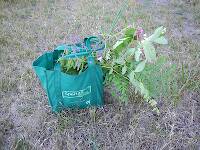
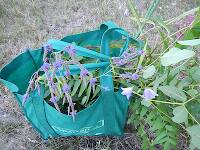
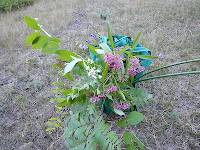
![Couldn't ask for a nicer evening in July - looking up the feeder creek to [REDACTED] Pond for brookies Couldn't ask for a nicer evening in July - looking up the feeder creek to [REDACTED] Pond for brookies](/im_user_share/pic_2543_200.jpg)
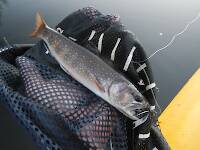
In the Photography Board by Jmd123
+ 2



![Couldn't ask for a nicer evening in July - looking up the feeder creek to [REDACTED] Pond for brookies Couldn't ask for a nicer evening in July - looking up the feeder creek to [REDACTED] Pond for brookies](/im_user_share/pic_2543_200.jpg)

In the Photography Board by Jmd123
2
Jul 19, 2018
by PeterCO
by PeterCO
1
Mar 10, 2007
by Troutnut
by Troutnut
3
Jan 2, 2018
by Jmd123
by Jmd123
1
Mar 8, 2008
by Kroil
by Kroil
5
May 25, 2012
by Jmd123
by Jmd123

